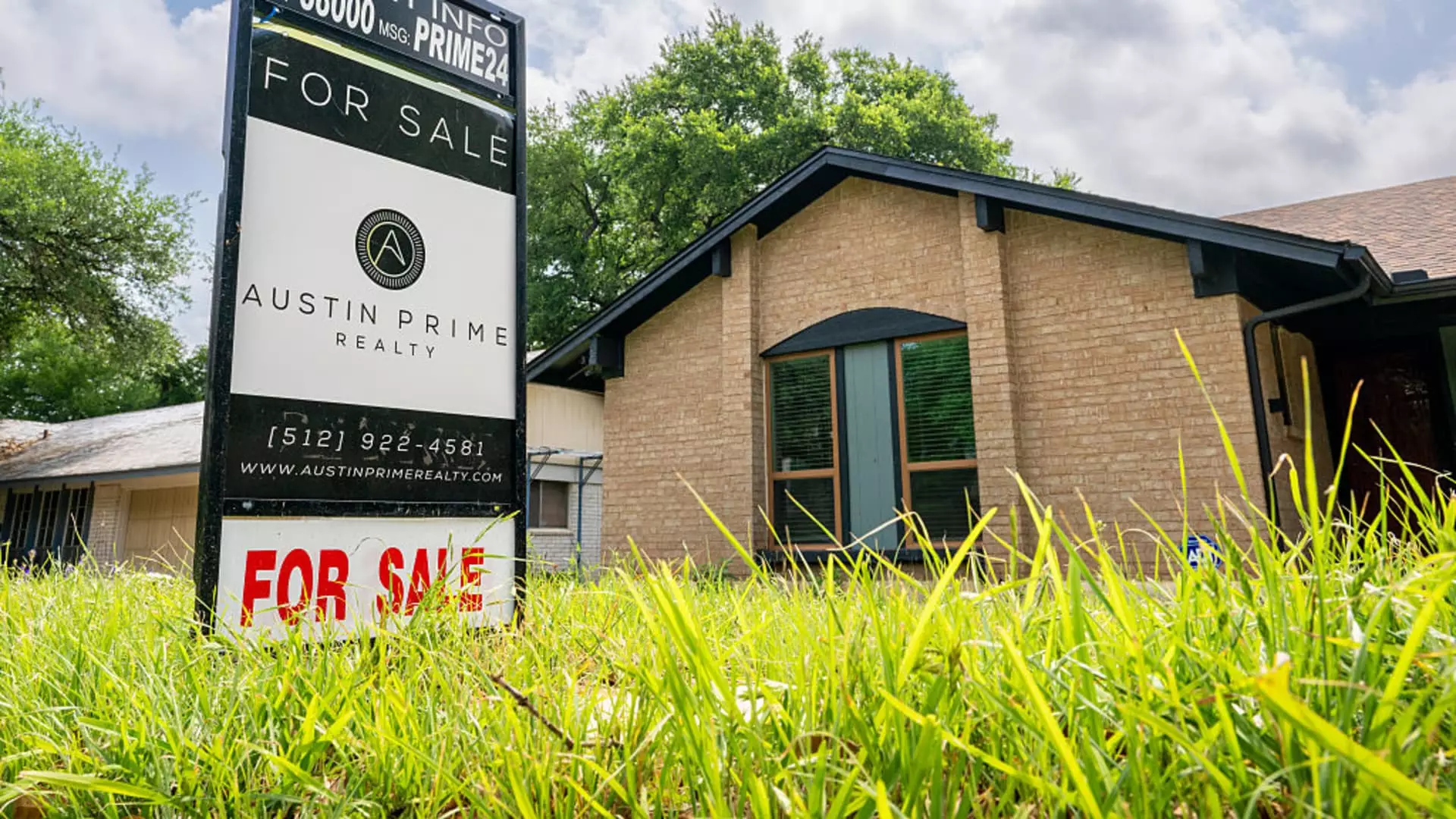Despite the mortgage interest rates remaining relatively stagnant last week, a notable uptick in demand from homebuyers and those looking to refinance has set a peculiar tone for the housing market. According to the Mortgage Bankers Association (MBA), total mortgage application volume surged by 12.5% compared to the previous week, marking a spike that is ostensibly encouraging yet historically low. This dichotomy illustrates the precarious state of the housing market, where enthusiasm is overshadowed by lingering caution stemming from economic volatility.
The average interest rate for 30-year fixed-rate mortgages nudged up slightly to 6.93%, but with rates hovering just 9 basis points lower than the same period a year ago, it hardly evokes optimism. Moreover, points for these loans decreased, suggesting a tiny glimmer of relief for buyers willing to make substantial down payments. However, one must question if these marginal changes in rates are truly beneficial or if they serve merely as a distraction in a climate fraught with uncertainty.
Rebounding Demand Amid Historical Constraints
What’s perplexing is the contrast between increased mortgage applications and the stagnant rate environment. The surge in refinancing requests—up 16% week-over-week and an impressive 28% higher than last year—indicates that borrowers are eager to capitalize on the limited opportunities available. Yet, one has to ponder: at what cost does this fleeting activity come? The hope for economic stability appears continuously outweighed by external factors including trade tensions and inflation metrics that remain a damper on long-term strategies.
Homebuying applications increased by 10% as inventory levels had risen by approximately 31% from last year, sparking some modest confidence. It is essential, however, to weigh these statistics against the backdrop of overall buyer sentiment driven more by necessity than desire. The environment fosters an illusion of abundance, but the broader economic landscape casts shadows of doubt, rendered even more evident by the recent patterns of inflation and market volatility.
The Underlying Challenges of Affordability
While the MBA’s Joel Kan reports a noticeable surge in applications, it prompts us to consider whether these buyers are prepared to navigate the challenges of affordability in today’s market. Yes, the potential for lower home prices emerges as a slight relief, but it is also crucial to recognize that wages have yet to catch up with these often fluctuating prices and rates. For many, the dream of homeownership remains just that—a dream, consistently deferred by financial constraints and an unpredictable economy.
The interplay of ongoing economic uncertainties is proving to be a double-edged sword. For some buyers, it presents an opportunity to negotiate better deals and secure homes that were previously out of reach. For others, it’s a reminder of the daunting financial landscape they must traverse. Even with a mounting supply of properties, the looming fears of inflation rates and international trade ramifications can skew the market quite drastically.
The truth remains that the upswing in mortgage applications does indicate a response to slight market shifts, but will it be sustainable in the face of rising uncertainties? As potential homeowners venture into this fragile recovery, they may find that the brief moments of optimism serve as mere snapshots of a market that is anything but stable. The coming days will reveal whether this uptick is a momentary surge or the beginnings of a more resilient market presence amidst lingering adversities.

